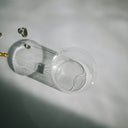Hair loss can be a distressing experience for many individuals, impacting self-esteem and confidence. For those seeking a permanent solution, a full head hair transplant may be the answer. This comprehensive procedure has gained popularity as a reliable method to restore hair, resulting in natural-looking outcomes. In this article, we will delve into what a full head hair transplant entails, the techniques involved, recovery time, costs, and what to expect during the process.
Table of content
What is a full head hair transplant?
A full head hair transplant is a surgical procedure designed to restore hair on a bald or thinning scalp by relocating hair follicles from one part of the body (usually the back or sides of the head) to the areas experiencing hair loss. This technique ensures that the newly transplanted hair grows naturally in its new location, providing a long-lasting solution to hair loss. The procedure can effectively address various types of hair loss, including male and female pattern baldness and other forms of alopecia.
As your leading source for hair health information over the past 4 years, we never compromise on accuracy. When it comes to your health, you deserve information you can truly rely on - and earning your trust is our top priority.
Here's how Scandinavian Biolabs ensures every piece of content meets the highest standards of accuracy and integrity:
- Credentialed Experts: Our reviewers are actively practicing doctors and medical researchers
- Stringent Reviews: Content undergoes rigorous editing by subject specialists and review by a practicing doctor.
- Evidence-Based: We rely on well-established research from trusted scientific sources like peer-reviewed journals and health authorities.
- Full Transparency: Our editorial standards, writer credentials, reviewer credentials, correction process, and funding are all publicly documented.
- Independent Voice: While we do promote products, we operate in a vacuum to business operations. Our main goal is just an unwavering commitment to providing medically-sound guidance.
You can count on Scandinavian Biolabs to consistently deliver the trustworthy health information you deserve. Read our Editorial Standards.
How does a full head hair transplant work?
The process of a full head hair transplant typically involves two primary techniques: Follicular Unit Transplantation (FUT) and Follicular Unit Extraction (FUE). In FUT, a strip of skin with hair follicles is removed from the donor area and then dissected into individual grafts, which are implanted into the balding areas. In contrast, FUE involves extracting individual hair follicles directly from the scalp using a specialized tool, minimizing scarring and recovery time.
What should you expect during the procedure?
Before the procedure, patients undergo a thorough consultation, where the surgeon assesses their hair loss pattern, discusses goals, and creates a personalized treatment plan. On the day of the surgery, the patient is typically given local anesthesia to ensure comfort. The procedure can take several hours, depending on the number of grafts needed. Patients can expect to be awake throughout the process, with breaks as necessary.
What is the recovery time for a full head hair transplant?
Recovery time varies among individuals, but most patients can return to their normal activities within a few days. Initial swelling and discomfort may occur, but these symptoms typically subside within a week. It is essential to follow post-operative care instructions provided by the surgeon to promote healing and ensure optimal results. Full hair growth can take several months, as transplanted hair follicles enter a resting phase before beginning to grow new hair.
What are the costs associated with a full head hair transplant?
The cost of a full head hair transplant can vary significantly based on factors such as the surgeon's experience, the clinic's location, and the number of grafts required. On average, patients can expect to pay between $4,000 and $15,000 for the procedure. It is crucial to consider the quality of care and results when evaluating cost, as cheaper options may not provide the same level of expertise and results.
Are there any risks or side effects?
As with any surgical procedure, there are potential risks and side effects associated with full head hair transplants. These may include infection, scarring, and unnatural-looking hair growth. However, by choosing a qualified and experienced surgeon, the likelihood of complications can be significantly reduced. It is vital for patients to discuss any concerns with their surgeon during the consultation.
Who is a suitable candidate for a full head hair transplant?
Ideal candidates for a full head hair transplant are individuals experiencing significant hair loss who have sufficient donor hair available. Both men and women can benefit from the procedure, though it is essential to assess the underlying cause of hair loss. A consultation with a qualified hair restoration specialist can help determine if a full head hair transplant is the right option for you.
Conclusion
A full head hair transplant can be a life-changing solution for those struggling with hair loss. By understanding the procedure, recovery, costs, and potential outcomes, individuals can make informed decisions about their hair restoration journey. If you are considering a full head hair transplant, consult with a professional who can guide you through the process and help you achieve your desired results.
Tired of Thinning Hair? Try a Clinically Tested Serum.
Looking for a natural way to regrow hair and achieve a thicker, fuller head of hair? Ditch the stinging nettle for hair loss – Bio-Pilixin Serum is a drug-free hair activation serum that delivers clinically tested results.
Here's why Bio-Pilixin is superior:
- Clinically Tested Results: 93% of users saw a reduction in hair loss, and 73% experienced increased hair density.
- Safe and Natural: Unlike harsh chemicals, Bio-Pilixin uses plant growth factors derived from stem cell technology to nourish hair follicles and stimulate growth.
- Fast-Acting: See visible results in as little as 45 days (most typically see results within 150 days).
Stop wasting time on unproven remedies. Bio-Pilixin is the safe & effective serum you've been searching for.
Read more:






